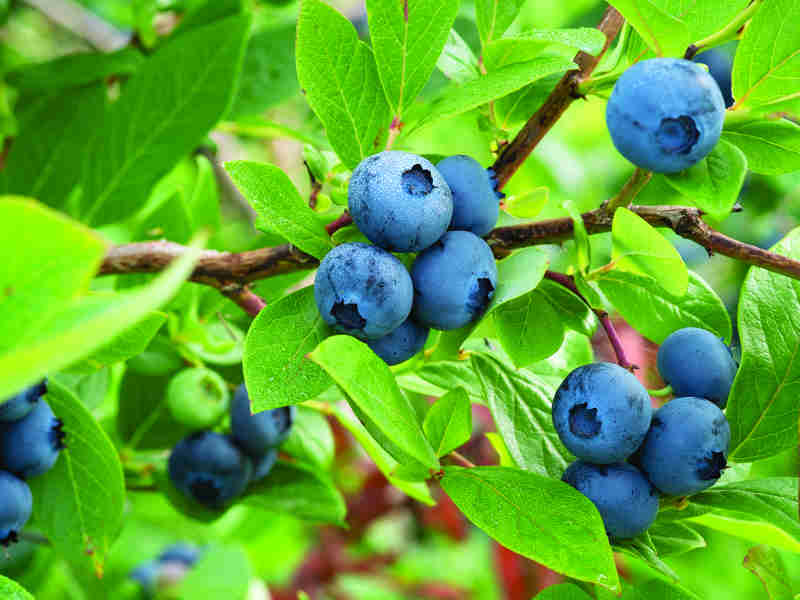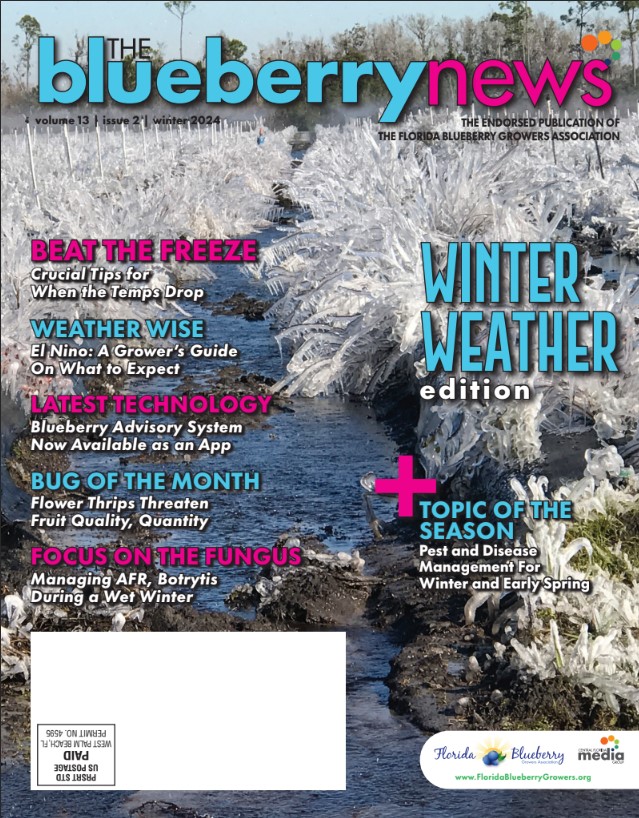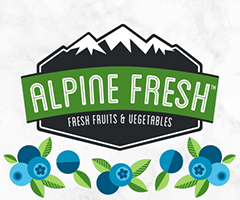Updated Research Regarding the Latest Disease in Florida Blueberries
by Phil Harmon, Ph.D. UF IFAS Blueberry Pathologist and Extension Specialist and
Deanna Bayo, Graduate Research Assistant, UF IFAS Dept. of Plant Pathology
Research continues on the newest disease to be identified on Florida blueberries, bacterial wilt. In 2016 was the first time Ralstonia solanacearum was isolated from blueberries in Florida; interestingly, the bacterial pathogen has caused diseases of tobacco, tomato, and pepper for more than 100 years in the state.
It’s certainly not clear exactly why we are seeing it now, but several possible factors likely have contributed to include: production with new susceptible varieties, increased production in South Florida where it’s hotter and more favorable for this pathogen, stresses involved with evergreen production of a typically deciduous plant, an increasingly variable and changing climate, and possibly introductions of new strains of the bacterium.
Before we can develop management recommendations specific to the new disease, we have to ask some research questions to try to understand how at least some of these factors are contributing to the outbreak. Below follows a summary of the planning for, and last few months results from, our research into bacterial wilt of blueberry here at UF IFAS. These are preliminary results from research that will be repeated and continued with important updates as available at FBGA and UF IFAS Extension events and publications. Research takes time and results need to be validated through the publishing process in peer-reviewed journals; in the meanwhile, here is where we’re heading, and what we’ve found so far.
The Pathogen
Dr. David Norman is a bacteriologist and world expert on Ralstonia. His research involves many different strains of the pathogen, some of which only occur outside the US, and that we don’t want. He has researched the strains that we’ve pulled off of every Florida farm to date, and has compared them genetically and biochemically with all known strains. We wanted to know early on if it looked like this had been an introduction of a new strain, so that measures to try to limit spread could be employed.
Dr. Norman found that there was not one, but three distinct strains (phylotypes) isolated from farms in the initial 2016 outbreak (Fig. 1). In other recent introductions of Ralstonia into crop production areas, the strains that have spread onto a crop in a new area have been identical, but this was not the case here. Diverse strains around the state were found, suggesting that this was not an introduction of an exotic pathogen, but more likely disease caused by diverse pathogens already on the affected farms.
The strains came from two groups common in the Americas and one group more common in Asia (Fig. 2). Additional isolates are being collected from farms where the disease continues to occur and from new occurrences for future characterization of the pathogens that are infecting our blueberries. This research is not likely to result in practical short term solutions for managing the disease, but we have to know diversity of the pathogen for the next step; determining if we have resistance within our existing blueberry varieties and in the breeding program.
This research was presented by Dr. Norman at the 2017 American Phytopathological Society Meeting in the poster presentation: 430-P Bacterial wilt outbreaks of multiple sequevars on blueberries in Florida David J. Norman, Ana Maria Bocsanczy, UF MREC, Apopka, FL, Phil Harmon, Carrie Lapaire Harmon, UF IFAS, Gainesville, FL and Aftab Khan, UF, Orlando, FL.
Variety differences and breeding resources
All of the initial outbreaks of bacterial wilt occurred on the UF variety Arcadia. Arcadia is still the most severely affected variety on farms where the disease has persisted the last two years; however, the disease has been confirmed on additional varieties.
The first experiments in my greenhouse in Gainesville were designed to confirm pathogenicity of some of the strains on Arcadia and to optimize our inoculation protocol for the amount of pathogen to use, the temperature to keep plants at, whether and how severely to wound roots, and which strain produces the most consistent symptoms following inoculation. The optimized protocol was repeated and set the stage for ongoing research, conducted primarily by graduate student Deanna Bayo.
The varieties tested in the first run of the experiment included: Arcadia, Avanti, Chickadee, Emerald Farthing, Indigocrisp, Jewel, Keekrisp, Kestrel, Meadowlark, Patrecia, Snowchaser, and Vernon (a rabbiteye variety). All tested varieties had some level of disease and the pathogen was isolated from at least one plant of each. However, the most susceptible group in this initial test included Arcadia, Avanti, Indigocrisp, and Keekrisp. The least susceptible included the rabbiteye variety Vernon, Jewel and Emerald. Farthing, Abundance, Meadowlark and Kestrel had slightly more disease but were not statistically different than the least susceptible group either.
Rabbiteye blueberries have tested more resistant than most highbush and other tested species of Vaccinium in Dr. Norman’s research as well. Clones of a sparkleberry, Vaccinium arboretum, rootstock were inoculated in a separate experiment and were susceptible but took longer than Arcadia plants to die. No grafted plants have been evaluated to date.
In the field, Arcadia is the most susceptible, and Avanti planted nearby affected Arcadia has shown relatively less severe disease but with some plant losses. Meadowlark and Kestrel have been diagnosed with bacterial wilt from field samples but show relatively fewer symptoms and plant losses on farms where Arcadia are dying in substantial numbers.
The disease has not been found on Jewel or Emerald, but these older varieties are not utilized widely in South Florida or in evergreen production. The disease was observed on a planting of the proprietary variety Myra and was quite severe on that particular farm. The disease has killed advanced selections in at least two of the UF Blueberry Breeding programs Stage 3 cooperator sites, which has offered selection opportunities at these locations.
Future plans are to repeat the first round of inoculations, as well as conduct additional research focusing on rabbiteye and highbush varieties with greater proportions of rabbiteye genetic background. We are cautiously optimistic that we will find usable resistance within the genetic variability already represented within the breeding program, or sources of resistance that can quickly be identified and incorporated. Dr. Patricio Munoz is working with both Dr. Norman and I towards that end.
Chemical options
The only group of pesticides that have been shown to have some effect on Ralstonia diseases of other crops include the phosphites on geranium and tomato. Phosphites or phosphorous acid products are labeled for use on blueberry and some have Ralstonia already on the label (K-Phite is an example). Growers have taken advantage of this fact and have utilized through drip and banded applications where bacterial wilt has been an issue.
In 2017 growers on 5 farms reported that these bed drenches or through drop applications had seemed to stop or slow lateral spread of the disease down rows. Re-planted bushes, even of the Arcadia variety, survived the first year with regular applications post-harvest through fall.
In 2018 the disease has spread to several new farms and has killed many additional plants on most if not all the farms affected by the original outbreak. One of the key reasons for this, I believe, was the plant stresses and flooding associated with the hurricanes in summer 2017. After the hurricane, some growers were not able to get phyte applications out due to flooding and other hurricane related issues.
On organic farms, since there are no organic sources of phosphorous acid, the disease has continued to increase in severity and offers anecdotal evidence of the limited protection phosphites have given to conventional farms using them. Another association that has been made is with insect feeding damage and increases in bacterial wilt. Diaprepes Citrus root weevil damage, flathead borer feeding, and termite infestation of bark growing media all have been associated with bacterial wilt, though it is not clear if any of these actually cause more severe disease at this point.
My greenhouse research has evaluated several antibiotic, plant-oil-based product, various phosphites, and peroxide-type sanitizing products. We are in the process of evaluating a few biological control products as well. In our initial tests, we did not see a consistent benefit to using any of the products prior to inoculation. In our current trials we have reduced the amount of inoculum and eliminated root wounding as part of the protocol to try to give these products a chance. In other crops, no products have been completely effective and even the phosphites can be overcome by increasing the amount of bacteria or wounding roots prior to inoculation. These are not particularly promising initial results to be sure, but we will continue to evaluate all possibilities. Only phosphite drenches are currently recommended, and growers should follow all pesticide label instructions carefully.
In summary, there is a lot left to learn about this new disease and the ultimate effect it will have on blueberry production in Florida. I am hopeful that severe disease and losses will remain limited to a handful of varieties that will be replaced by better options from our breeding program. We will continue to report our opinions, observations, as well as research results as they become available and appreciate all feedback and input.






